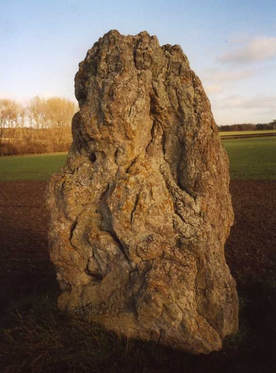Survey modules: Standing stones

Some of the earliest monuments in our region that are classified as ‘ritual monuments’ consist of standing stones, some in apparent isolation, others in pairs, and a few in the form of stone rows or stone circles. These monuments always attract much interest from the public, but are very poorly understood. Very few have been investigated in our region, although it is generally assumed that they date from the Neolithic or early Bronze Age (roughly between 4000 and 1500 BC). They may have been erected for a range of different reasons, but for now there is not a single example for which we can state with certainly why it exists.
Volunteers will visit all the known standing stone sites in the region to record not only the visible form of the monuments, but also their landscape setting. Depending on the results of this survey work, one or more sites may be chosen for further analysis later in the project
Volunteers will visit all the known standing stone sites in the region to record not only the visible form of the monuments, but also their landscape setting. Depending on the results of this survey work, one or more sites may be chosen for further analysis later in the project